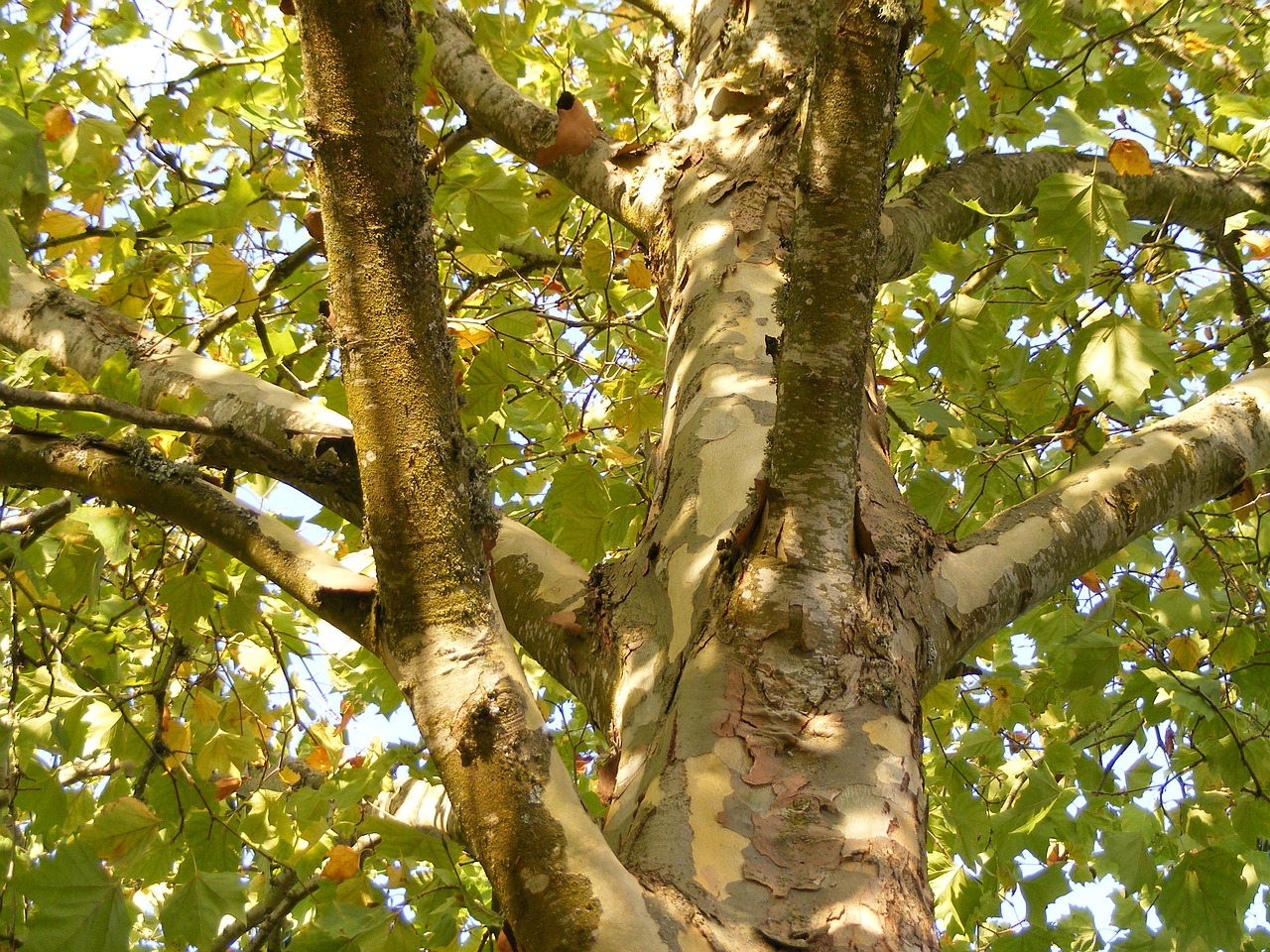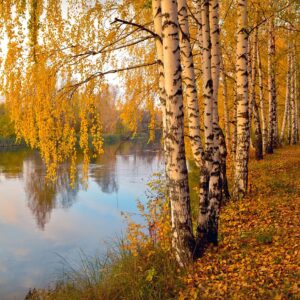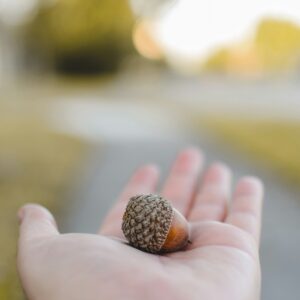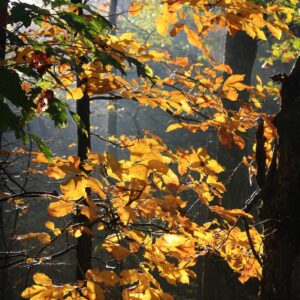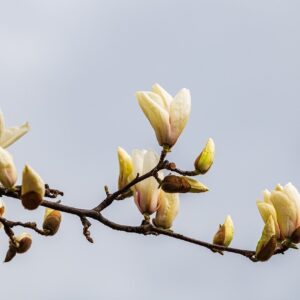Sycamore (Platanus occidentalis), also known as American Sycamore or Western Sycamore, is a large deciduous tree native to eastern North America. It is known for its distinctive bark, broad leaves, and impressive size. Sycamore (Platanus occidentalis) is a majestic and versatile tree known for its striking appearance and ecological benefits. Its distinctive bark, large leaves, and broad canopy make it a valuable addition to large landscapes, parks, and natural settings.
Appearance:
Size: The Sycamore is one of the largest trees native to North America, typically growing 75-100 feet (23-30 meters) tall with a spread of 50-70 feet (15-21 meters). In optimal conditions, it can reach up to 150 feet (45 meters) in height. It has a broad, rounded canopy with a dense, spreading growth habit.
Leaves: The leaves are large, broad, and palmate, measuring about 6-12 inches (15-30 cm) across. They have 3-5 lobes with serrated edges and are dark green on the upper surface with a lighter green underside. In the fall, the foliage turns yellow to brown, providing seasonal color.
Flowers: Sycamore flowers are small and inconspicuous, appearing in clusters on the tree. They are greenish and bloom in early spring (April to May). The flowers are not particularly showy but are followed by the tree’s distinctive fruit.
Fruit: The fruit is a spherical cluster of spiky balls, about 1-2 inches (2.5-5 cm) in diameter. These clusters contain numerous small seeds and hang from long, slender stems. The fruit matures in late summer to fall and can persist into winter.
Bark: One of the most distinctive features of the Sycamore is its bark. The bark is grayish-brown and exfoliates in large patches, revealing a bright white or cream-colored inner bark. This peeling bark gives the tree a unique, mottled appearance.
Habitat: Sycamore prefers moist, well-drained soils and is commonly found in bottomlands, floodplains, and along riverbanks. It thrives in a range of soil types, including loam, clay, and sand. It is hardy in USDA Hardiness Zones 4 to 9.
Uses:
Ornamental: The Sycamore is valued for its distinctive bark, broad canopy, and impressive size. It is often used as a specimen tree in large landscapes and parks. Its large size and shade make it suitable for creating cool, shady areas.
Economic: The wood of Sycamore is used for various applications, including furniture, cabinetry, and millwork. It is also used in making butcher blocks and other utilitarian items due to its durability.
Ecological: The tree provides habitat and food for wildlife. The fruit is eaten by birds, and the large canopy offers shelter for various animals. Its extensive root system helps stabilize soil and prevent erosion.
Care:
Pruning: Prune Sycamore in late winter or early spring before new growth begins. Pruning helps maintain the tree’s shape, remove any dead or damaged branches, and improve air circulation within the canopy.
Watering: The tree prefers consistently moist soil but can tolerate brief periods of drought once established. Regular watering during dry spells helps maintain its health and vigor.
Fertilizing: A balanced, slow-release fertilizer applied in early spring supports healthy growth. The tree is not overly demanding in terms of fertilization but may benefit from additional nutrients in poor soils.
Pests and Diseases: Sycamore can be affected by pests such as aphids and scale insects, as well as diseases like anthracnose and cankers. Regular monitoring and proper care can help manage these issues. The tree is generally resilient but can occasionally suffer from conditions like leaf spot or powdery mildew.

